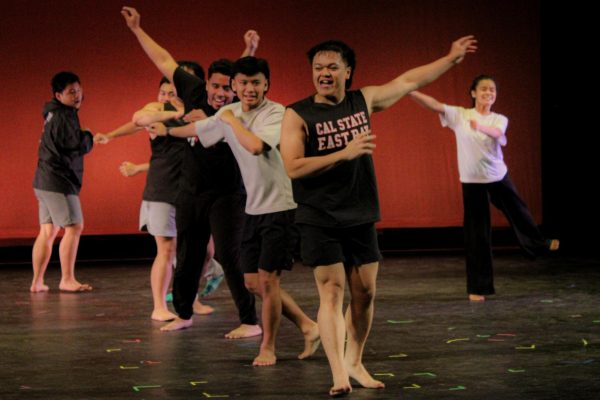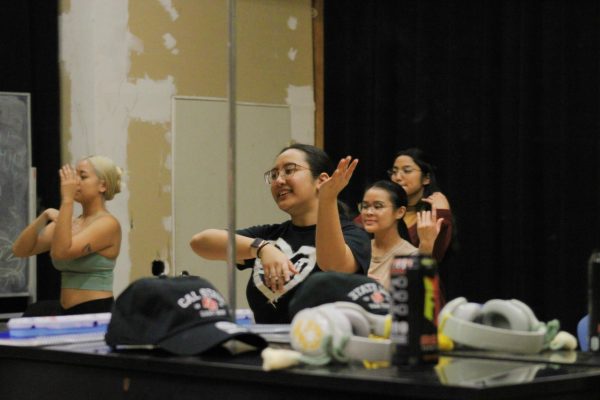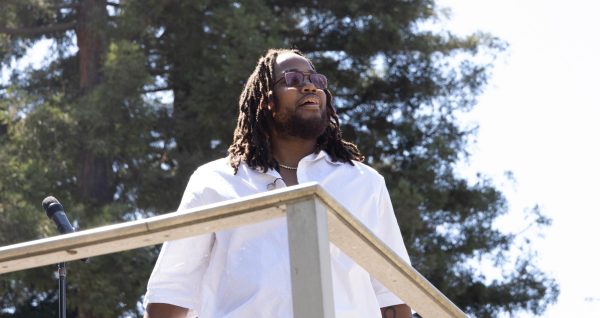CSU Chancellor lays out vision in first state of the CSU address
Illustration | Evelin Saavedra
CSU Chancellor Timothy White highlighted the need to increase graduation rates.
California State University Chancellor Timothy White, in the first state of the CSU address pledged to get more students to complete their degrees on Wednesday.
White then introduced the Graduation Initiative, which will improve graduation rates and broaden access to the university. The plan, which will cost the CSU $50 million, seeks to improve graduation rates over the next ten years by 10 percent for all undergraduate students that start at a CSU as a freshman. It hopes to improve the graduation rate for community college transfers by 5 percent.
The source of funding has yet to be determined, said Elizabeth Chapin, public affairs assistant for the office of the CSU chancellor. “And to those who ask about the cost of undertaking this project, I reply it is not a cost,” White said during the address. “It is an investment.”
In his address, White said the CSU system plays an important part in revitalizing California’s economy. He then outlined seven key areas in which CSU needs to improve. First was his plan to increase the ratio of tenure-track faculty over lecturers, implying the value of faculty over lecturers.
“It is our outstanding faculty who go above and beyond to help students secure a meaningful future,” said White of tenure-track professors.
White hopes to increase online courses that students can enroll in no matter which CSU they attend, in an effort to reduce registration bottlenecks, which is where courses that are required to graduate are in such high demand students are not able to enroll, which leads to delays in graduation.
First-year students must be better prepared for college, he said. High school campuses across the state have not been preparing students for college-level education, which has affected the level of education in the CSU.
“While [the lack of preparation] is not our fault per se,” said White, “it is our problem.”
The CSU system will begin to take a centralized approach to collecting data from all 23 campuses. White implied previously such a system did not exist.
“To make the wisest decisions possible, they need to be evidence and data based,” said White, “and often times we can’t access the information in a timely fashion on a campus or across the system…without making 23 phone calls.”
Data-driven decision making, known as DDDM, is not new to the educational institutions, according to a paper published by SAGE in 2012.
In the report it states, “highly effective schools and classroom teachers have been using data for years and recognize the value to inform their work across all levels of the educational system.”
Lastly, White says he will work to improve transfer degree completion rates and have students out of college within two years of transferring from a community college. Part of this commitment, he said, will be to continue to advocate with the state government for a $5 million joint budget proposal to market the Associate Degree for Transfer program.
This program guarantees admission for California Community College transfer students with junior standing to the CSU system, according to the California Community Colleges Chancellor’s Office.
White concluded the speech by acknowledging how it is taking students longer than average to graduate with a degree.
He also recognized the need to repair or replace infrastructure at many CSU campuses in spite of a lack of additional funding from the state government. 48 percent of all structures are 40 years or older, he said.
However, he celebrated the CSU system, and how it is accessible to students coming from different walks of life.
To achieve these goals, the CSU system will work with policymakers in Sacramento and Washington DC, students, educators, and the public for support and funding.
“…We are the California State University, a public good worthy of public and private investment, and we produce the graduates that are needed to lead and improve the quality of life for all peoples in this state.”










